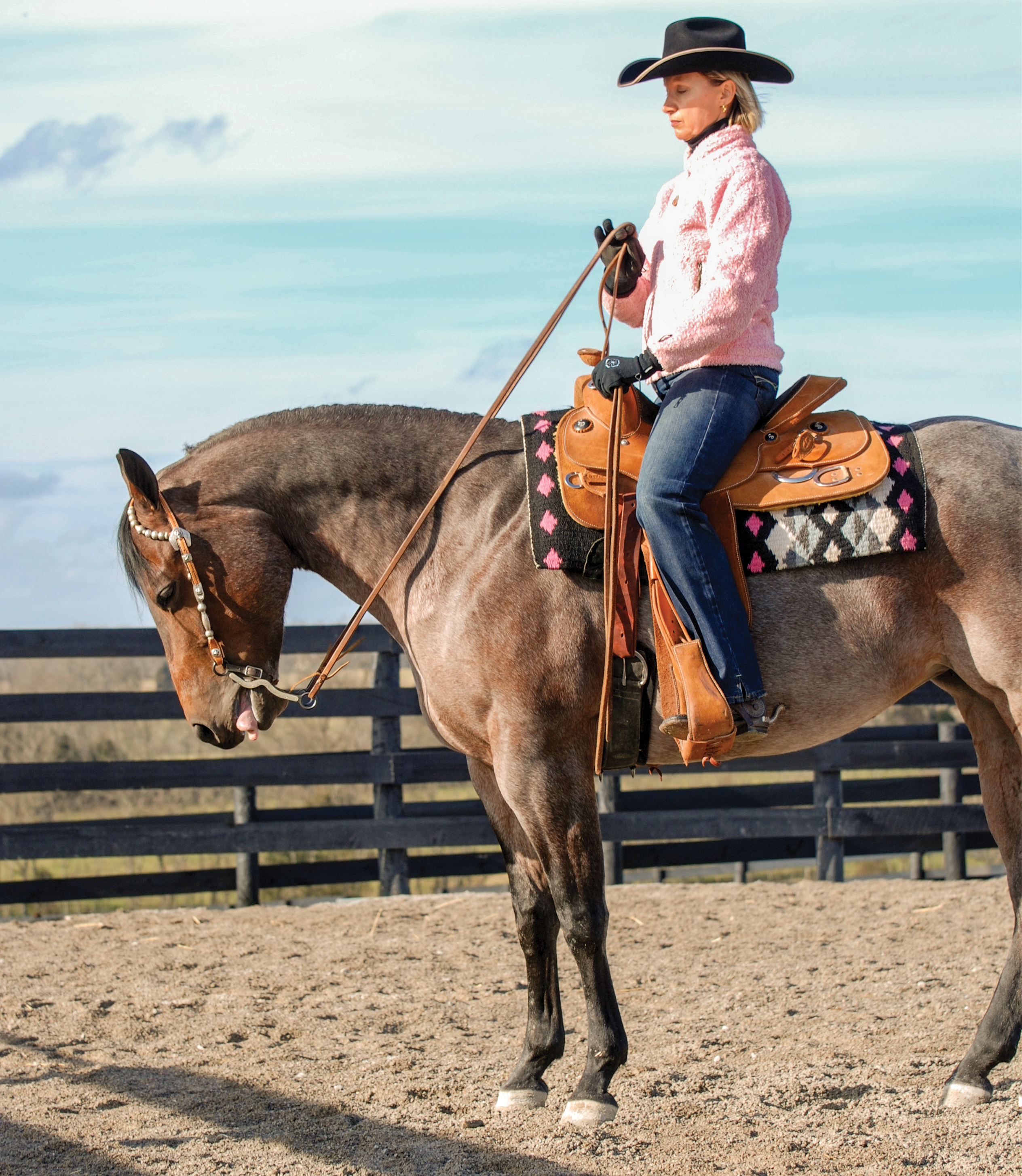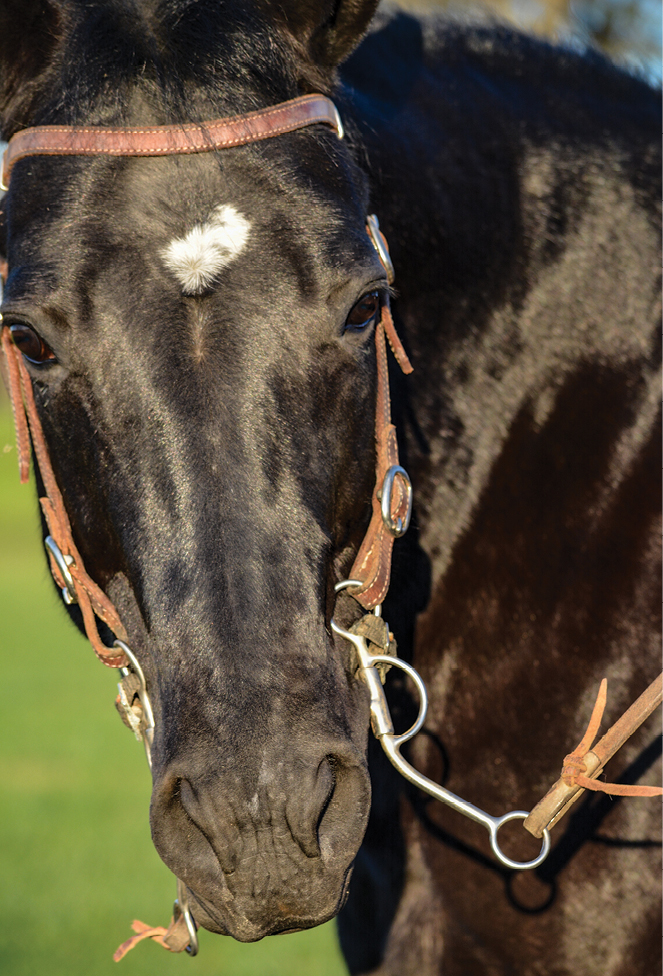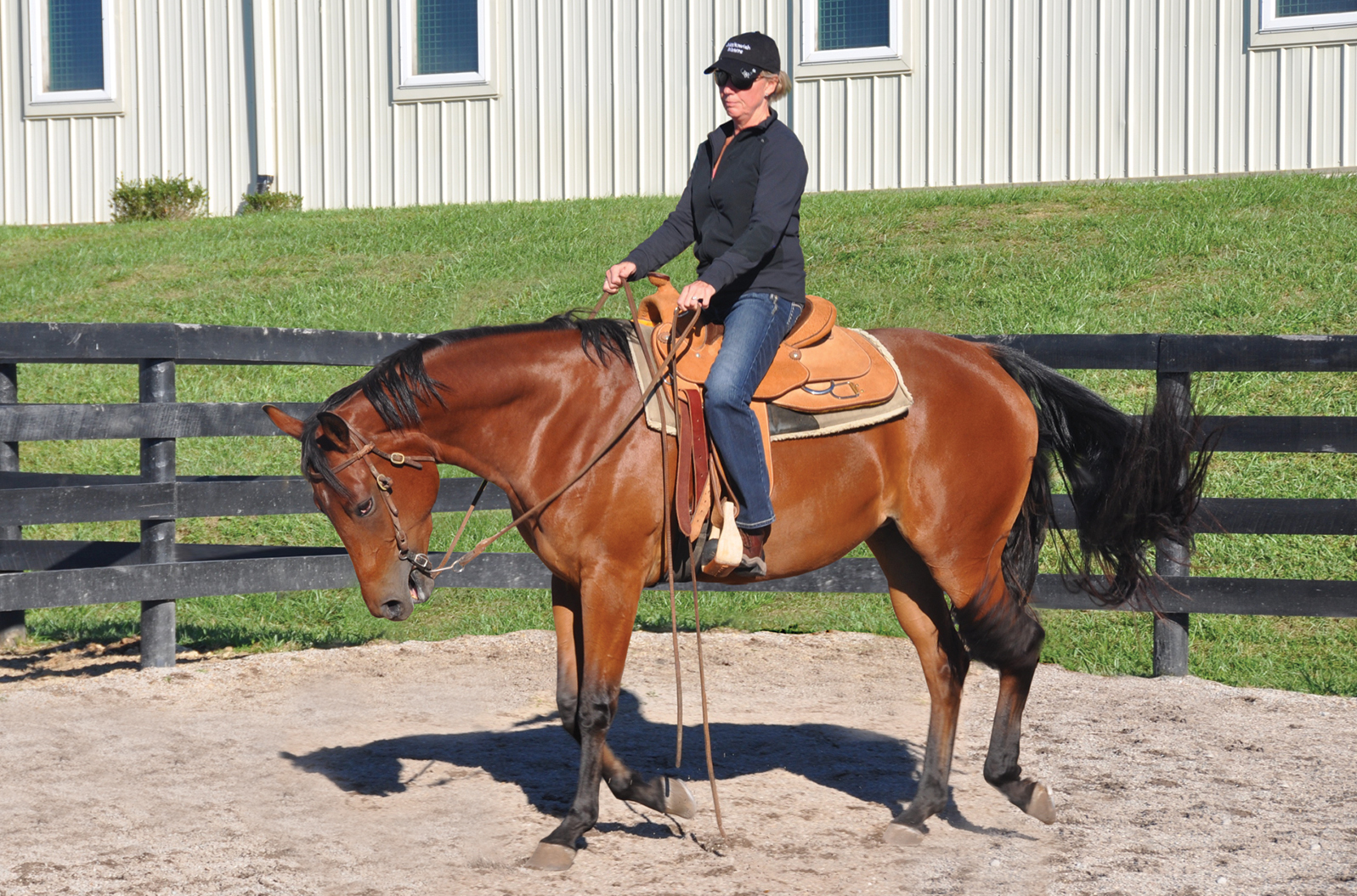You wouldn’t dream of sabotaging your horse’s training or making his life miserable. But if you routinely make the blunders I discuss here, you’re guilty of exactly that. Your horse learns not only from the lessons you teach him on purpose, but also from a whole range of things you do that affect him on a daily basis.
As the saying goes, you’re either training or un-training him every moment you’re with him. Plus your attitude and approach to training can influence how well he responds to you.
[READ MORE: Let Your Horse Do His Job]

Avoid the blunders I describe here, and you’ll improve your horsemanship, increase your horse’s responsiveness, and make him happier.
Here’s what to stop doing.
1. Pick, Pick, Pick
The blunder: Constantly nagging your horse to get the response you want. You’re like the mother who’s forever yelling “stop bickering!” at her kids, but never does anything to actually make them stop.
Maybe your horse isn’t flexing at the poll the way you’d like, so you keep bump-bump-bumping the reins, hoping he’ll eventually respond. In reality, he won’t, because he’s tuning you out in self-defense.
Plus you may not even realize you’re doing the nagging.
Makes your horse: Resentful and less responsive.
A better way: Make clear what you want and reward your horse when he complies. If you want to work on flexion, do so mindfully, asking and then releasing pressure whenever your horse responds. If instead you’re constantly picking, your horse will never understand what it is you’re trying to get him to do.
[READ MORE: Ride With Soft Hands]

2. Lax Husbandry
The blunder: Neglecting to rule out physical pain or discomfort as a cause of any unwanted behavior before you begin trying to correct that behavior.
Makes your horse: Miserable.
A better way: Any time your horse is resistant or willfully disobedient, first check to see if there are physical or health issues causing his behavior. It could be a sore back, an illness or lameness coming on, or a poor-fitting or poorly adjusted piece of equipment.
To rule out health issues, explain the situation to your veterinarian and ask if a check-up is warranted. Periodically examine all your horse’s tack, including his bit, to make sure everything fits well and isn’t rubbing, pinching, or otherwise hurting him.
3. Losing It
The blunder: Taking it personally when your horse misses a cue. You get after him roughly for it, scaring and intimidating him. Your thinking is, “I’m the boss, period.” So when he displeases you, you smack him.
Makes your horse: Nervous, fearful, and confused.
A better way: First, maintain your composure. Your horse is a prey animal, so angry vibes from a predator (you!) can genuinely unnerve him. Then consider whether you’ve inadvertently asked for the behavior yourself (by botching or mistiming a cue) or whether your horse is responding to a related pain or discomfort issue that should be resolved before you continue training (see No. 2).
If he’s not in discomfort, ask again more clearly, rewarding any effort to respond correctly. If he still doesn’t get it, see No. 6.
[READ MORE: Train Your Brain, Boost Your Riding]
4. Drillmaster
The blunder: Asking for too much repetition. When you’re trying to cement new learning, you practice the maneuver over and over. You know horses learn by repetition, so you keep sidepassing over that pole until the cows come home. Or asking for that lead change 20 times in a row. Especially if it’s fun for you, you just keep at it.
When you practice a pattern or a maneuver over and over like this, you’re teaching your horse to take over. To relieve the boredom, some horses eventually say, “You’re coming with me!” and start doing their own thing, anticipating maneuvers in advance.
Makes your horse: Sore, resentful, bored, plus wanting to anticipate cues.
A better way: Plan your schooling sessions in advance, mixing things up and providing frequent rest breaks. Offer a bit of novelty where possible (trail ride!), and do everything you can to prevent boredom, soreness, or your horse’s conclusion that he hates his job.
5. Clueless, Careless

The blunder: Inadvertently teaching your horse the wrong lesson. For example, you let him get away with something on Monday—which trains him that it’s OK—then correct him abruptly for it on Friday. Or you’re casual and inconsistent…sometimes you intend for a certain cue to mean one thing, sometimes you intend for it to mean another.
For example, “whoa” should always mean stop, not sometimes just slow down.
Makes your horse: Confused and frustrated; less eager to learn.
A better way: Remember, whenever you’re handling or riding your horse, you’re either training or un-training him. Therefore, be consistent! Know what you want from him, be precise in how you ask for it, ask the same way every day (unless you need to change—see No. 6), and always reward the try.
6. My Way or Highway
The blunder: Letting stubbornness or a lack of creativity inhibit your training options. If somehow you’re not getting through to your horse, even after giving the same cue three times, you just bear down, insisting that he learn the way you want to teach him.
Makes your horse: Dislike being trained by you.
A better way: When you run into resistance, and after you’ve attended to the concerns of No. 2 and No. 5, get resourceful and find a way that’ll make it easier for your horse to learn. Often it’s a matter of simplifying training by breaking it down into component parts. Fix the part that’s “broken,” then plug it back into the big picture.
For example, you’re rounding a corner at the lope and your horse pushes to the outside, ignoring your outside leg. Drop to a walk or trot (thereby lowering the degree of difficulty) and focus only on a leg yield. Once your horse becomes light and responsive to your leg, go back to the lope and try those corners again.
[READ MORE: A Calm Horse Learns Best]
7. Stingy/Tardy Release
The blunder: Asking for something or correcting an error, but when your horse does do what you want him to, failing to cease the cue immediately or to release the pressure completely. This prevents the lesson from coming through.

For example, you’re asking your horse to give his face and flex through his jaw, but you don’t adequately release the bit pressure when he does so, or you keep fiddling with his mouth even after he has softened.
Makes your horse: Fail to learn.
A better way: Be smart about your cues, reaction times, reinforcements, and rewards. Know that teaching a horse that’s just learning something is different from asking a seasoned horse for a response he already knows how to do. A green horse needs more reaction time and reward just for trying, whereas you can expect more from a horse that understands but is just saying no.
[READ MORE: Reward Based Horse Training]
In all cases, though, when you do get a response, your release of the cue must be immediate, or else the horse never understands when he was doing it right.

8. Cookie-Cutter Riding
The blunder: Riding every horse the exact same way, without taking the individual needs and characteristics of the horse into consideration, especially if he’s new to you.
Makes the horse: Less responsive than he could be.
A better way: Provide a customized approach where needed. Some horses are sensitive, some are slugs, some are smart, others a bit dense. If you have more than one horse, or if a new horse has come into your barn, be alert to how each horse feels under you and how he responds, so you can make adjustments as needed.
A rider with “feel” can read how big or small a cue needs to be to prompt a response. That said, always ask first as softly as possible, then use more pressure as necessary depending on the needs of the horse. As I tell my students, there are many levels in between soft and 1,000 percent. Use them!
9. Bad Form
The blunder: Gripping with your legs, hanging on the reins, leaning forward, or any other equitation fault. These errors “tell” your horse things you don’t mean to say. Plus, they make it hard for him to know what’s a cue and what’s just “noise.”
For example, if you’re hanging on the reins because you feel insecure, your horse might think you’re asking him to back up instead of go forward.
Makes your horse: Irritated, confused, and wanting to tune you out.
A better way: Work on your horsemanship until you’re consistently a confident, effective rider. This might include stirrupless work or no-reins work on a longe line to improve your seat and balance, and/or regular coaching from a pro.
[READ MORE: 6 Proven Ride-Better Tips]






